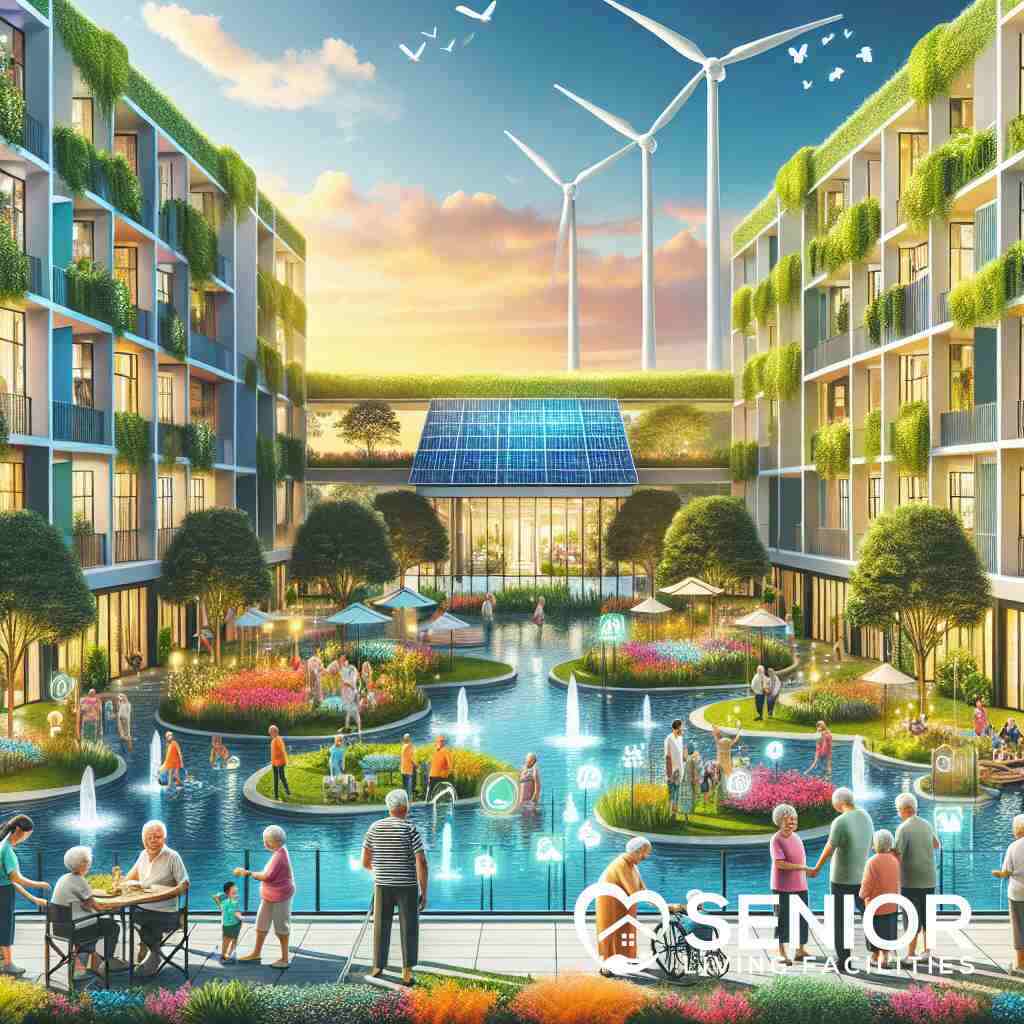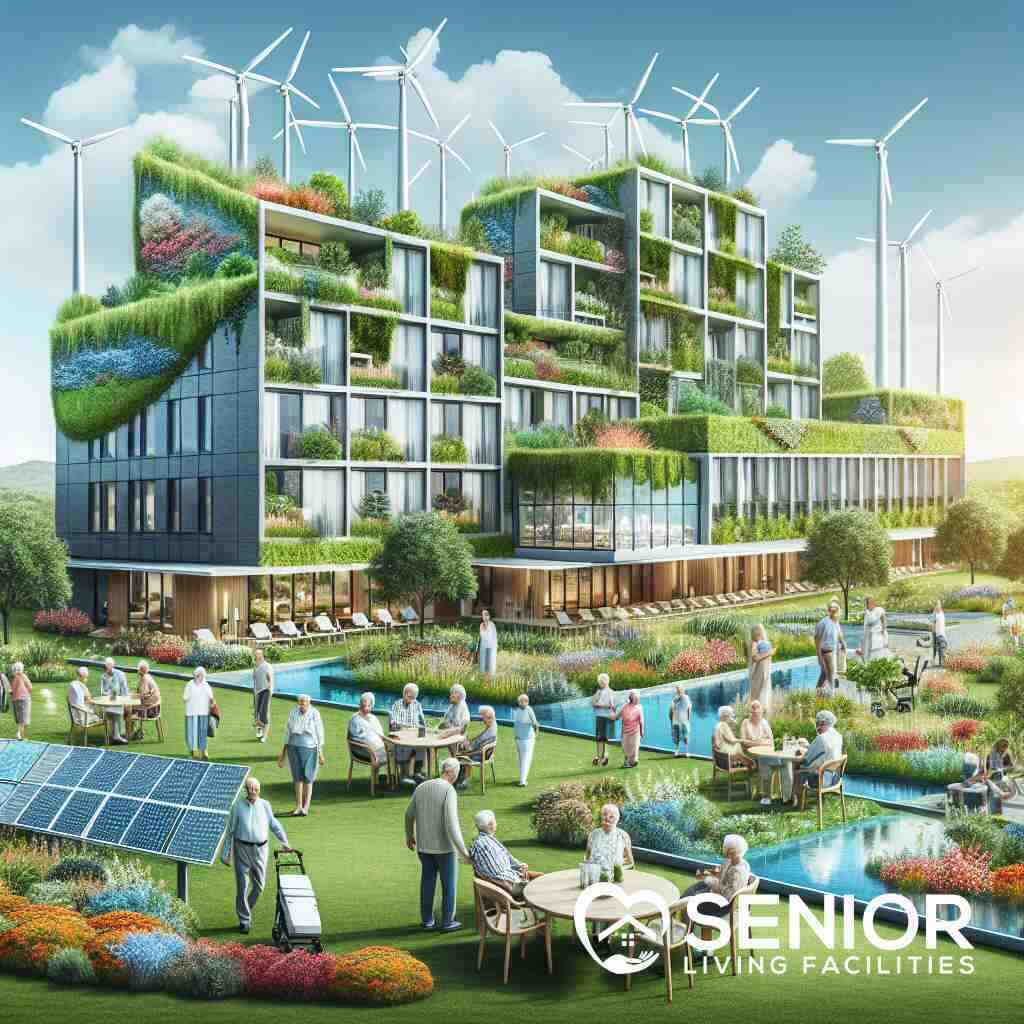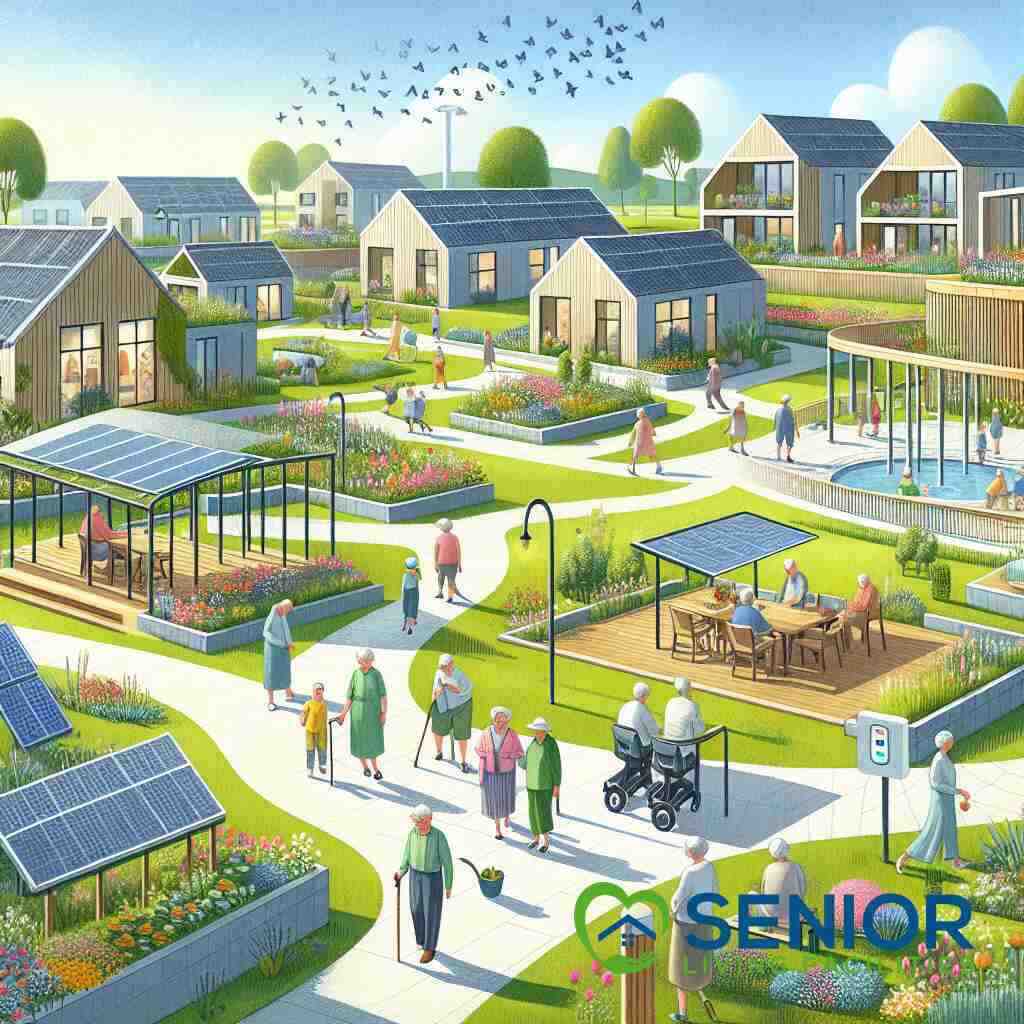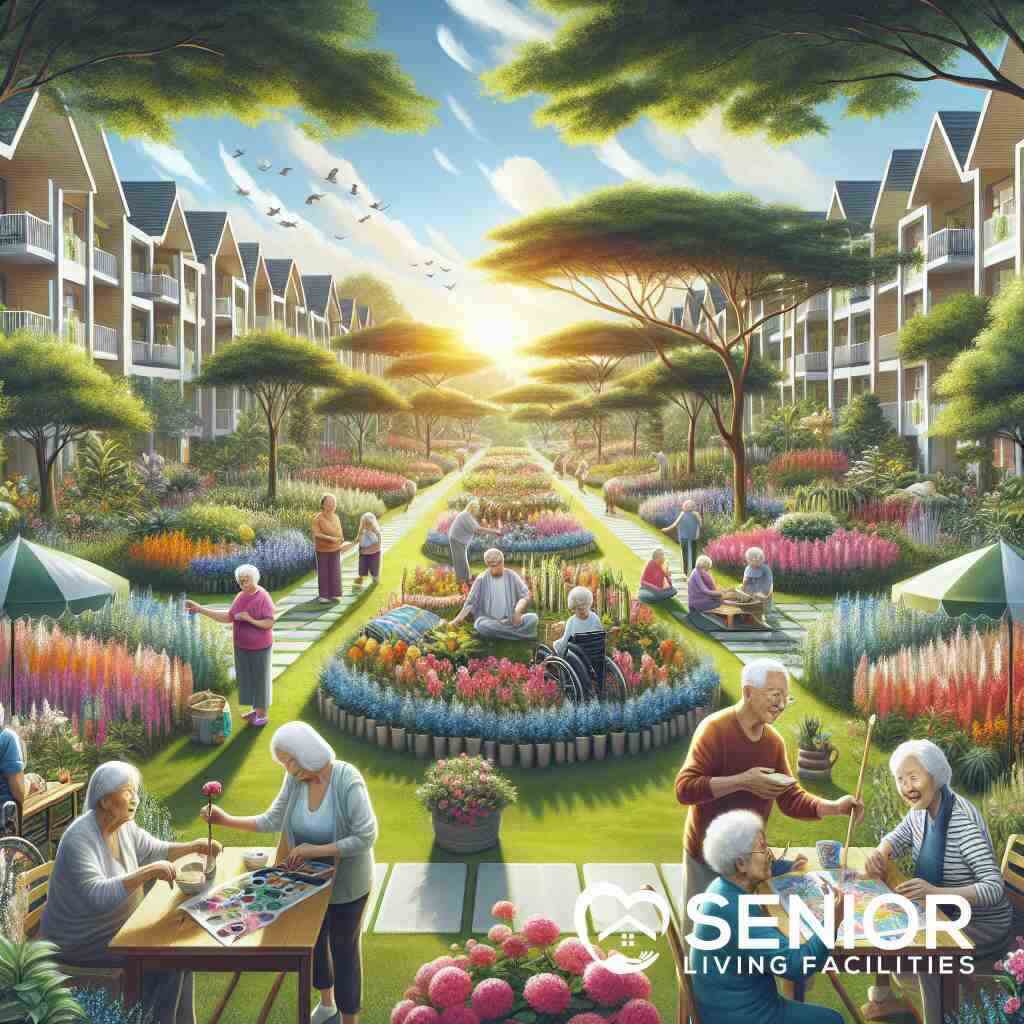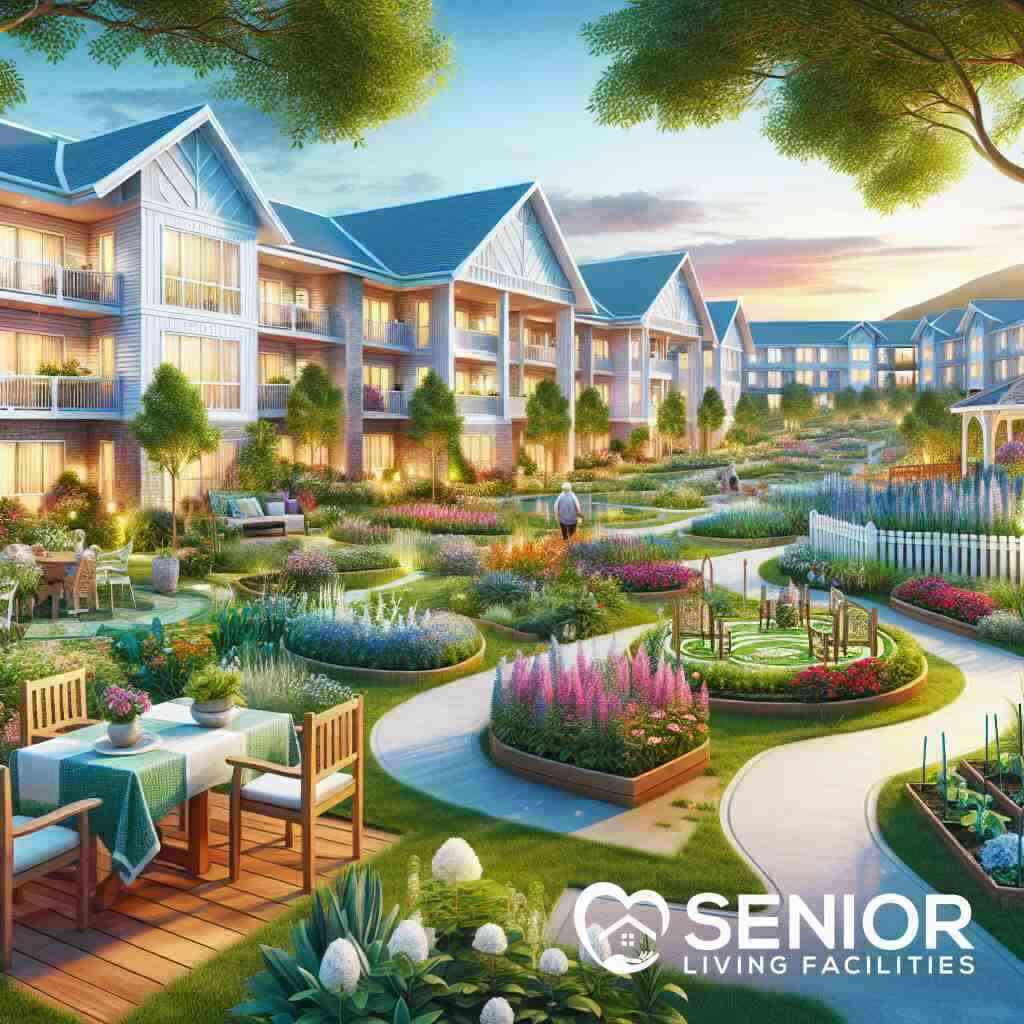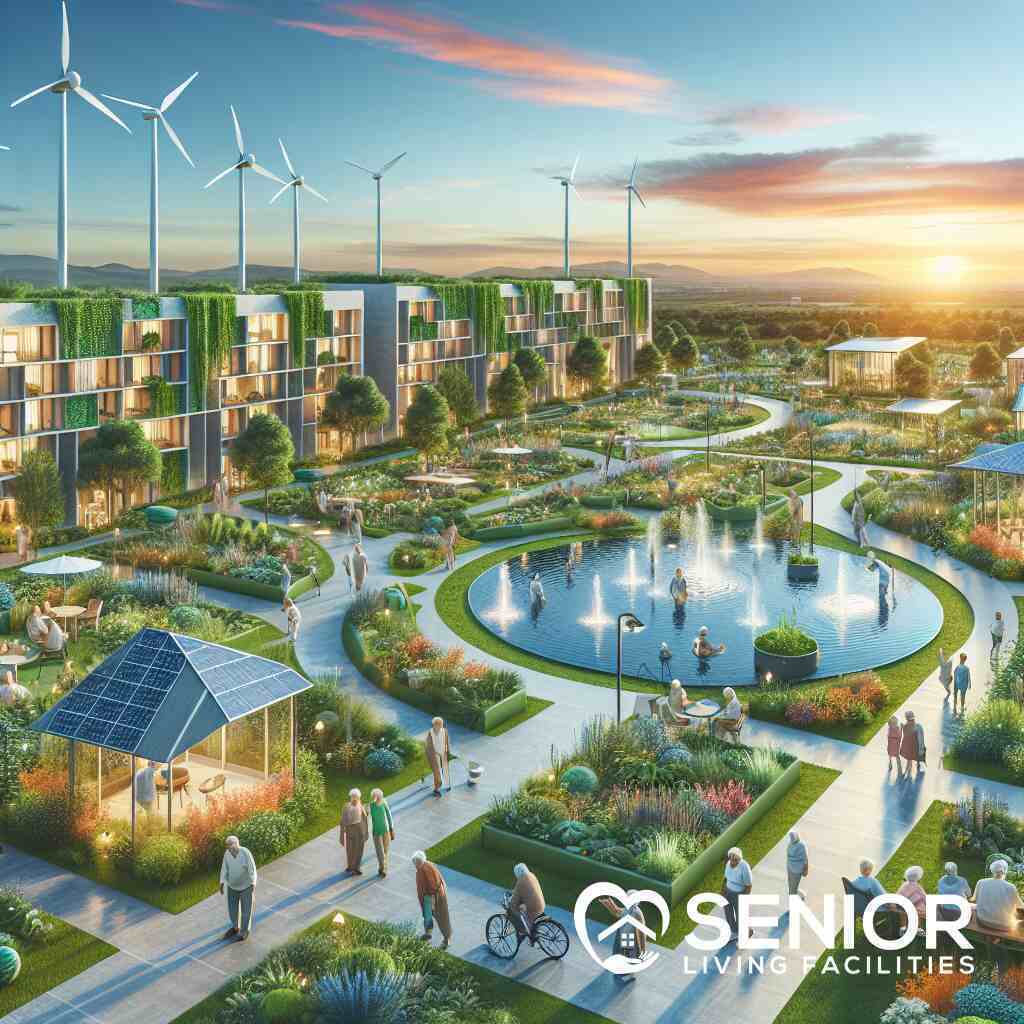
How Eco-Living Transforms Senior Living Facilities?
February 19, 2025
Introduction to Eco-Living in Senior Communities
The Rising Demand for Sustainable Senior Living
In recent years, there has been an undeniable surge in the demand for sustainable senior living options. As the awareness of climate change and environmental responsibility grows, more seniors and their families are seeking eco-friendly senior living facilities. This shift reflects a broader societal trend towards sustainable living, where environmental impacts are minimized and resources are utilized efficiently. By adopting green practices, senior communities not only reduce their ecological footprint but also appeal to a new generation of environmentally-conscious retirees.
Understanding Eco-Friendly Senior Housing
Eco-friendly senior housing refers to living spaces designed and operated with environmental sustainability at the core. These facilities incorporate a variety of green features such as energy-efficient appliances, solar panels, recycled building materials, and water-saving fixtures. By embracing eco-friendly housing design, senior living communities are creating environments that not only protect the planet but also enhance the quality of life for their residents. In these spaces, seniors enjoy the peace of mind that comes from knowing their lifestyle aligns with the greater good of environmental stewardship.
Key Benefits of an Eco-Conscious Lifestyle for Seniors
Embracing an eco-conscious lifestyle in senior living facilities offers multiple advantages for residents and the environment alike. Environmentally responsible nursing homes promote healthier indoor air quality through the use of non-toxic materials and improved ventilation systems. Additionally, sustainable landscaping for senior facilities ensures lush, natural surroundings that improve mental well-being and provide opportunities for outdoor activities. Eco-friendly senior communities not only contribute to the environmental movement but also foster a sense of community and purpose among seniors, empowering them to play an active role in preserving the planet for future generations.
Redefining Senior Living with Green Innovations
Renewable Energy Transformations in Senior Communities
The integration of renewable energy in senior communities marks a significant step towards sustainable living for seniors. Solar panels, wind turbines, and geothermal systems have revolutionized energy consumption in these facilities, providing a clean and sustainable alternative to traditional power sources. This shift not only lessens the carbon footprint of senior living facilities but also demonstrates a commitment to investing in the future of the planet. Seniors residing in these communities benefit from reduced energy costs, contributing to more affordable living conditions. Furthermore, renewable energy for seniors fosters a sense of pride and engagement among residents, knowing their community actively participates in environmental preservation. By exploring senior living in California, one can find numerous examples of facilities adopting these cutting-edge energy solutions.
Incorporating Smart Technology for Energy Efficiency
Smart technology plays a pivotal role in enhancing energy efficiency within senior living environments. By implementing advanced systems such as smart thermostats, lighting controls, and energy management software, these communities can significantly reduce energy consumption. Smart technology not only optimizes the use of resources but also provides residents with ease and convenience through automation. Seniors can enjoy a comfortable living environment where the temperature and lighting adjust automatically to their preferences and needs. Moreover, these technologies empower residents by allowing them to monitor and manage their energy use, promoting an eco-friendly senior lifestyle. Leading the way in this domain are facilities exploring senior living in Arizona, showcasing the latest advancements in smart tech integration.
Green Building Design Revolutionizing Senior Facilities
Green building design is at the forefront of transforming senior housing into sustainable and eco-conscious living spaces. These designs incorporate sustainable materials, energy-efficient systems, and innovative architectural techniques that minimize environmental impact while maximizing efficiency and comfort. From the use of recycled materials to the implementation of natural lighting strategies, green building design significantly enhances the livability of senior communities. This revolution in design not only aligns with ecological objectives but also creates healthier living conditions by improving indoor air quality and reducing exposure to harmful chemicals. More importantly, green construction practices reflect a broader commitment to the wwell-beingof residents and the planet. Those interested in this progressive approach to senior living can consider eco-friendly housing design options in their search for the perfect community.
Eco-Friendly Practices Enhancing Senior Well-being
Waste Reduction Strategies in Senior Living Facilities
In senior living facilities, implementing waste reduction strategies is crucial for promoting sustainability and eco-friendly senior living. Facilities are increasingly embracing recycling programs and composting initiatives, ensuring that less waste ends up in landfills. By organizing community workshops on waste segregation and upcycling, the senior community is actively participating in environmental responsibility. Additionally, some facilities have adopted digital communication methods to reduce paper use, further contributing to sustainable operations. By fostering a culture of waste minimization, these communities not only lessen the environmental impact but also create an empowering atmosphere for seniors who desire to contribute positively to the planet.
Water Conservation Efforts in Senior Housing
Water conservation in senior housing is a fundamental aspect of eco-conscious senior living. Many facilities are installing water-saving devices such as low-flow faucets and dual-flush toilets, significantly reducing water consumption. Beyond technology, education plays a vital role as well; residents are encouraged to adopt water-saving habits, like shorter showers and mindful gardening practices. Furthermore, the implementation of rainwater harvesting systems adds an extra layer of sustainability by providing an alternative water source. These collective efforts ensure that senior housing environments are not only comfortable but also exemplify stewardship in water conservation.
Sustainable Landscaping and Its Benefits
Sustainable landscaping is transforming senior living environments by incorporating eco-conscious practices that benefit both residents and nature. These landscapes utilize native plant species, reducing the need for water, pesticides, and fertilizers, aligning with the principles of sustainable housing for seniors. Gardens designed with sustainability in mind offer therapeutic benefits, providing serene spaces for relaxation and engaging in light physical activity. As more seniors connect with nature, these landscapes contribute to mental and emotional well-being. Moreover, sustainable landscaping actively supports biodiversity, making senior living communities vibrant and ecologically balanced. By prioritizing these practices, facilities nurture a deeper connection between seniors and their surrounding environment.
Emerging Trends in Sustainable Senior Housing
Low Carbon Footprint Living for the Elderly
The quest for sustainable senior housing has given rise to the emerging trend of low-carbon footprint living for the elderly. Facilities are increasingly implementing energy-efficient practices and using renewable energy sources to minimize environmental impact. Solar panels, wind energy, and innovative construction materials are at the forefront of these efforts. These advancements not only reduce carbon emissions but also lower operational costs, making senior living more affordable. Furthermore, adopting low carbon footprint solutions ensures that seniors contribute to a healthier planet, preserving environmental quality for future generations. These practices are part of a broader movement towards sustainable living, as exemplified by communities actively exploring senior living in Nevada.
Eco-Conscious Community Living: A New Standard
Eco-conscious community living has become a vital standard in the transformation of senior living environments. Facilities are fostering communities centered around sustainability, where seniors are encouraged to participate in eco-friendly activities and education. These communities promote shared values of environmental stewardship, offering programs that include gardening, waste management, and energy conservation workshops. By integrating these principles into daily life, seniors experience a sense of unity and purpose, contributing to a more sustainable and socially responsible global community. This model aligns with the growing eco-conscious senior living trends and responds to the increasing demand for environmentally responsible senior care solutions.
Green Certifications for Senior Living Facilities
Green certifications have become a significant benchmark in assessing the sustainability of senior living facilities. As the demand for environmentally responsible nursing homes rises, more establishments are pursuing certifications that demonstrate their commitment to eco-friendly practices. These certifications evaluate facilities based on various criteria, including energy efficiency, water conservation, and waste management. Achieving a green certification for senior homes not only enhances the facility’s reputation but also reassures residents and their families of its environmental integrity. By setting a standard for sustainability, these certifications drive the industry towards more eco-conscious practices, ensuring that the senior care sector contributes positively to the fight against climate change while offering a healthier and more sustainable living environment for its residents.
Challenges and Solutions in Implementing Eco-Living
Overcoming Barriers to Eco-Friendly Transformations
Transitioning to eco-friendly practices in senior living facilities poses several challenges. One major obstacle is the initial investment required for green innovations. Many facilities must navigate financial constraints and prioritize upgrades. Fortunately, creative solutions are emerging, like grants and incentives, to offset these costs. Facilities can also focus on gradual transitions, starting with smaller, impactful changes such as installing LED lighting and energy-efficient appliances. Additionally, fostering a culture of sustainability among staff and management can drive the development of eco-friendly senior living environments, helping to overcome resistance to change and promoting a collective effort toward sustainability.
Balancing Cost and Sustainability in Senior Care
Balancing the financial aspects with sustainability goals is crucial for senior care facilities aiming to implement eco-friendly practices. The cost of sustainable materials and renewable energy sources, such as solar panels, can initially seem prohibitive. However, the long-term benefits, including reduced energy bills and maintenance costs, can prove advantageous. Facilities can employ lifecycle cost analysis to evaluate investments, ensuring that eco-conscious choices offer financial as well as environmental returns. Emphasizing cost-effective approaches, like enhancing insulation and utilizing natural light, supports the realization of renewable energy for seniors within budgetary limits. Ultimately, this equilibrium between cost and sustainability fosters more reliable and environmentally responsible nursing homes.
Role of Policy and Regulation in Promoting Eco-Living
Policy and regulation act as significant catalysts in advancing eco-friendly transformations in senior living facilities. Governmental support through policies encouraging sustainable practices can mitigate financial challenges by ffering subsidies or tax incentives to facilities that implement green technologies. Regulations mandating energy efficiency standards and waste reduction further compel facilities to adopt more environmentally friendly practices. Engaging with local authorities to understand and utilize these policy supports can vastly improve the feasibility of sustainable living for seniors. Furthermore, the collaboration of public bodies with industry leaders can stimulate more progressive standards, paving the way for the future of senior care facilities that place eco-living at their core.
Conclusion: The Future of Eco-Living in Senior Facilities
Advancing Towards a Greener Tomorrow
As we step into an era of environmental consciousness, eco-friendly senior living facilities represent the vanguard of a new age. These spaces are not just residences; they are ecosystems integrating modern innovation with sustainability principles. By embedding green practices, facilities are acting as catalysts in driving the movement toward more senior living for a greener tomorrow. This holistic transformation prioritizes environmental stewardship while showcasing the potential of eco-living. As facilities evolve, they continue to set ever higher standards, becoming models for sustainable living, producing a ripple effect not only within the senior care industry but across other sectors as well.
Empowering Seniors with Sustainable Choices
Empowering seniors to make sustainable choices is a significant benefit of eco-living. Through educational programs and dedicated support, residents learn the impacts of their daily habits and how they can make positive changes. This environment encourages seniors to embrace eco-friendly options, such as implementing waste reduction strategies and conserving water, thus making them active participants in protecting the planet. In these communities, seniors are not just passive residents; they’re dynamic contributors to sustainable initiatives. This empowerment creates a sense of agency and pride as seniors partake in shaping a more sustainable future, showcasing the importance of senior living sustainability insights.
The Long-Term Impact of Eco-Friendly Senior Communities
The lasting impact of eco-friendly senior communities extends far beyond reduced carbon footprints. These communities foster healthier living conditions through improved air quality and reduced exposure to harmful substances. How Senior Living Facilities Enhance Overall Wellbeing. Moreover, they exemplify a commitment to sustainability that inspires future generations, ensuring that eco-friendly endeavors continue to evolve Top 10 Trends in Luxury Senior Living Facilities for Winter. By prioritizing green practices today, these facilities are effectively laying the groundwork for a healthier planet tomorrow. Navigating Senior Living Facilities in the Modern Era. This long-term impact aligns seamlessly with the broader societal movement towards green community housing, ensuring that both current and future generations of seniors will benefit from these forward-thinking practices. The eco-living transformations in senior facilities promise not only a better living experience today but also a sustainable legacy for tomorrow.
Frequently Asked Questions
Question: What is eco-friendly senior living, and how does it contribute to a sustainable lifestyle for seniors at senior living facilities?
Answer: Eco-friendly senior living is a concept that integrates environmental sustainability into senior housing. At Senior Living Facilities, it means creating living spaces that prioritize energy efficiency, waste reduction, and the use of renewable energy in senior communities. Environmentally responsible nursing homes feature energy-efficient appliances, solar power systems, and sustainable materials to ensure a low carbon footprint in the senior living environment. This approach not only benefits the planet but also enhances the quality of life for seniors by providing them with a healthier, more comfortable living space. By choosing eco-friendly options, seniors contribute to long-term sustainability goals and become part of a movement towards eco-conscious senior apartments.
Question: How are sustainable senior housing options at Senior Living Facilities redefining senior living with innovations like smart technology?
Answer: Sustainable senior housing at Senior Living Facilities is redefined through innovative solutions such as smart technology, What is the Role of Tech in Modern Senior Living Facilities?, enhancing both energy efficiency and resident convenience. By using smart thermostats, lighting controls, and energy management systems, our facilities ensure that energy consumption is minimized, creating energy-efficient senior facilities. These eco-living benefits for seniors do not only optimize resource use but also provide ease of living as environments can automatically adjust to residents’ preferences How Does Senior Living Facilities Embrace Modern Living?. Consequently, seniors enjoy a higher quality of life paired with the empowering ability to monitor and manage their energy use actively. This innovation becomes a cornerstone of eco-friendly senior living, setting new standards in senior care How do Senior Living Facilities Transform Modern Senior Care?.
Question: Can you explain the benefits of the green building design for seniors as discussed in the blog title How Eco-Living Transforms Senior Living Facilities?
Answer: The green building design for seniors, as highlighted in How Eco-Living Transforms Senior Living Facilities, involves constructing living spaces with sustainability at the forefront. This means utilizing sustainable materials, improving indoor air quality, and incorporating natural light to create an environment that is both eco-friendly and comfortable. Our communities focus on providing eco-conscious seniors community options that combine architectural innovation with an environmentally responsible approach. This design not only reduces operational costs by being more energy-efficient but also demonstrates our commitment to creating a sustainable legacy, Exploring the Top Senior Living Options for 2024. Residents enjoy the positive health effects of reduced exposure to toxins, fostering an overall environment-friendly senior care experience.
Question: What waste reduction strategies are utilized by Senior Living Facilities to promote sustainable living for seniors?
Answer: At Senior Living Facilities, waste reduction strategies are integral to promoting a sustainable lifestyle for our residents. We implement comprehensive recycling programs and composting initiatives to minimize waste. By organizing workshops, we encourage community involvement in waste segregation and upcycling, which are vital components of eco-friendly senior lifestyles. Furthermore, our adoption of digital communication methods significantly reduces paper usage, showcasing our dedication to sustainable senior care. These initiatives not only lessen our ecological footprint but also empower seniors to actively participate in making positive environmental changes, embodying the principles of waste reduction in senior living.
Question: How do Senior Living Facilities incorporate water conservation efforts in their eco-friendly senior communities?
Answer: Water conservation is a key component of our eco-friendly senior communities at Senior Living Facilities. We invest in water-saving devices such as low-flow faucets and dual-flush toilets to drastically cut water usage. Beyond technology, we advocate for educational programs that encourage residents to adopt water-conserving habits, such as mindful gardening and taking shorter showers. Exploring the Intersection of Technology and Senior Care. Additionally, rainwater harvesting systems are employed to provide alternative water sources. These efforts collectively ensure that our senior housing promotes sustainable living while fostering a sense of community responsibilitytowards preserving vital natural resources.
